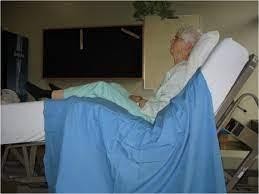A female client is admitted with complaints of abdominal pain, loss of appetite, and a weight loss of 25 pounds (11 kg) in the last four months. During the admission assessment, the client tells the nurse that she has no interest in playing cards with her friends anymore and feels worthless most days. Which nursing problem should the nurse address first?
Anxiety as evidenced by abdominal complaints secondary to depression.
Imbalanced nutrition as evidenced by 25 pound (11 kg) weight loss in four months.
Chronic low self-esteem as evidenced by feelings of worthlessness.
Risk for self-directed violence as evidenced by feelings of hopelessness.
The Correct Answer is D
The client's statement of feeling worthless most days and having no interest in activities she previously enjoyed indicates a potential risk for self-directed violence, including self-harm or suicidal ideation. These signs are significant and require immediate attention and intervention by the nurse.
Assessing and addressing the client's risk for self-directed violence is of utmost importance to ensure her safety and well-being. The nurse should initiate a thorough assessment of the client's mental health, including assessing for any suicidal ideation, intent, or plans. It is crucial to establish a supportive and non-judgmental environment for the client to express her feelings and concerns.
The nurse should collaborate with the healthcare team to develop an appropriate care plan that may involve interventions such as close observation, involving a mental health professional, implementing safety measures, and providing emotional support.
While addressing other nursing problems, such as anxiety, imbalanced nutrition, and chronic low self-esteem, is important, the immediate concern is the client's risk for self-directed violence due to her feelings of hopelessness.
Nursing Test Bank
Naxlex Comprehensive Predictor Exams
Related Questions
Correct Answer is ["A","E","F"]
Explanation
Correct- This statement indicates a misunderstanding about the relationship between acute stress disorder (ASD) and post-traumatic stress disorder (PTSD). While both are related to traumatic events, ASD is considered an initial reaction that typically resolves within three days to four weeks, whereas PTSD involves symptoms persisting for more than a month. The nurse should provide education on the different timelines and criteria for these disorders.
Incorrect- This statement reflects a proactive approach to managing symptoms and stress through holistic methods like meditation. There's no need for follow-up teaching here.
Incorrect- This statement shows the client's recognition of the potential benefits of therapy in managing their thoughts and emotions. It indicates their willingness to engage in effective coping strategies.
Incorrect- This statement reflects an understanding that their response to the traumatic event is not uncommon and that others may have similar reactions. It's a valid perspective on shared experiences during challenging times.
Correct- The statement "This diagnosis means that I am crazy" reflects a common misconception about mental health diagnoses. The term "crazy" is stigmatizing and does not accurately represent the nature of mental health conditions. The nurse should offer reassurance that a diagnosis of ASD does not define a person's overall mental state and emphasize the importance of seeking help without judgment.
Correct- The statement "I will probably need to be on medication for the rest of my life" implies a sense of hopelessness or a narrow perspective about treatment options. While medication might be part of the treatment plan for some individuals, it's important to emphasize that treatment is personalized and can include a combination of therapies, coping strategies, and lifestyle adjustments. The nurse should encourage an open discussion about treatment goals and possibilities.
Correct Answer is C
Explanation
A) Incorrect- The left lateral position might not provide enough lung expansion for a client in respiratory distress.
B) Incorrect- Reverse Trendelenburg (head of bed elevated, foot of bed lowered) might not provide enough lung expansion and could exacerbate respiratory distress.
C) Correct- The High-Fowler's position, where the client is sitting upright at a 90-degree angle or as upright as tolerated, helps to improve lung expansion, reduce pressure on the diaphragm, and promote optimal oxygenation. This position is commonly used for clients with respiratory distress.
D) Incorrect- The supine position may worsen pulmonary congestion and compromise lung expansion in clients with pulmonary edema.

Whether you are a student looking to ace your exams or a practicing nurse seeking to enhance your expertise , our nursing education contents will empower you with the confidence and competence to make a difference in the lives of patients and become a respected leader in the healthcare field.
Visit Naxlex, invest in your future and unlock endless possibilities with our unparalleled nursing education contents today
Report Wrong Answer on the Current Question
Do you disagree with the answer? If yes, what is your expected answer? Explain.
Kindly be descriptive with the issue you are facing.
